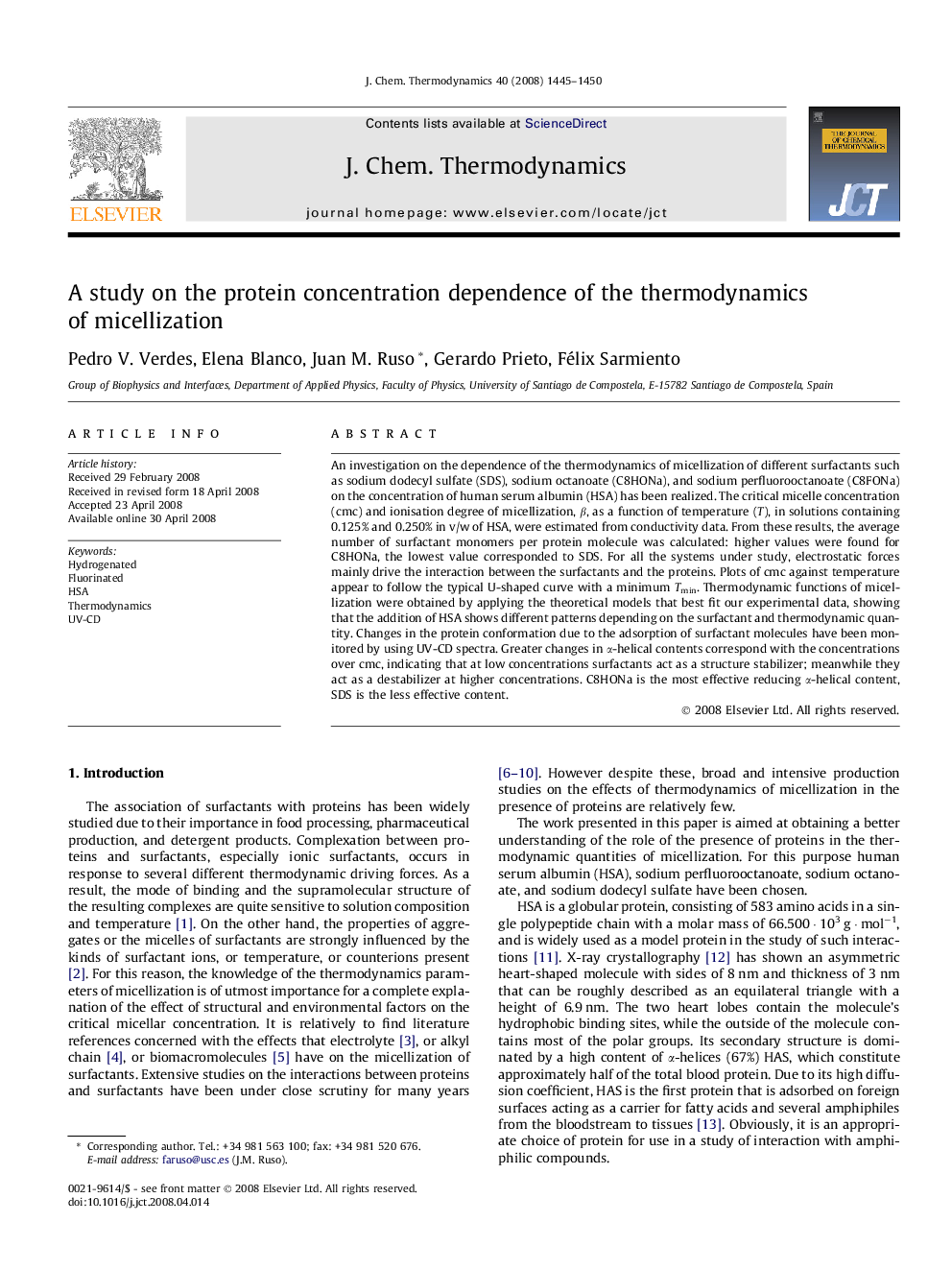| Article ID | Journal | Published Year | Pages | File Type |
|---|---|---|---|---|
| 217129 | The Journal of Chemical Thermodynamics | 2008 | 6 Pages |
An investigation on the dependence of the thermodynamics of micellization of different surfactants such as sodium dodecyl sulfate (SDS), sodium octanoate (C8HONa), and sodium perfluorooctanoate (C8FONa) on the concentration of human serum albumin (HSA) has been realized. The critical micelle concentration (cmc) and ionisation degree of micellization, β, as a function of temperature (T), in solutions containing 0.125% and 0.250% in v/w of HSA, were estimated from conductivity data. From these results, the average number of surfactant monomers per protein molecule was calculated: higher values were found for C8HONa, the lowest value corresponded to SDS. For all the systems under study, electrostatic forces mainly drive the interaction between the surfactants and the proteins. Plots of cmc against temperature appear to follow the typical U-shaped curve with a minimum Tmin. Thermodynamic functions of micellization were obtained by applying the theoretical models that best fit our experimental data, showing that the addition of HSA shows different patterns depending on the surfactant and thermodynamic quantity. Changes in the protein conformation due to the adsorption of surfactant molecules have been monitored by using UV-CD spectra. Greater changes in α-helical contents correspond with the concentrations over cmc, indicating that at low concentrations surfactants act as a structure stabilizer; meanwhile they act as a destabilizer at higher concentrations. C8HONa is the most effective reducing α-helical content, SDS is the less effective content.
